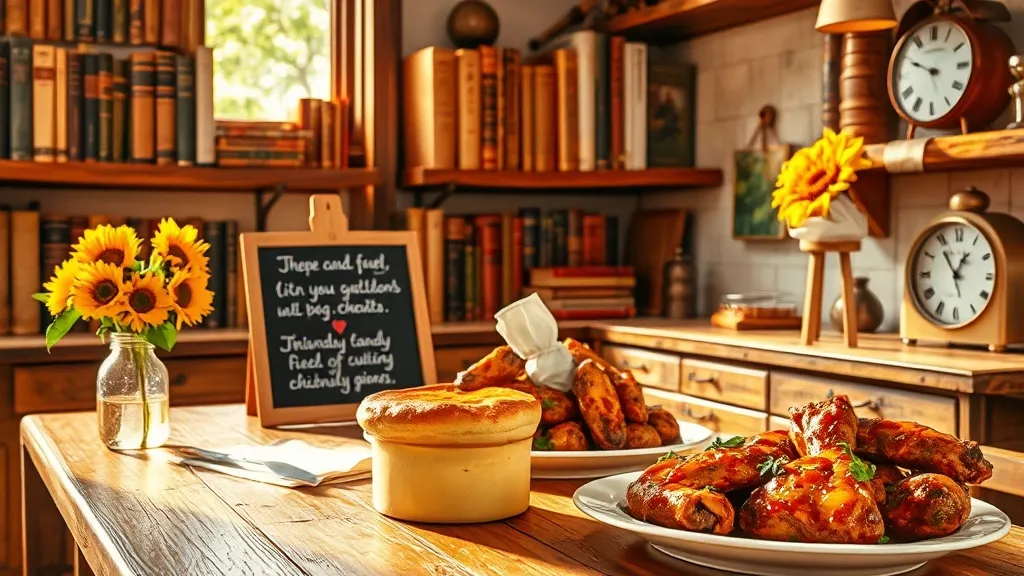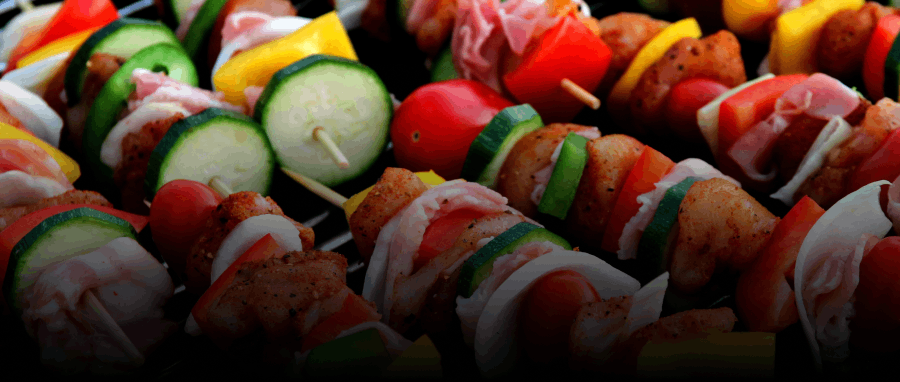The Curious Case of Caesar: Salad or Conqueror?
Alright, let’s dive into a little food history, shall we? When you hear the word Caesar, what pops into your head? A mighty Roman emperor or that delicious salad loaded with croutons and creamy dressing? Honestly, it’s a bit of a head-scratcher, and I can’t be the only one who sometimes confuses the two. If only Julius knew he’d be sharing the spotlight with a bowl of greens!
The story of Caesar salad is actually kind of fun. It was created in the 1920s by Caesar Cardini, an Italian immigrant who ran a restaurant in Tijuana, Mexico. Legend has it that one busy Fourth of July weekend, he whipped up this salad with whatever he had on hand. Talk about a culinary MacGyver moment! The original version didn’t even have anchovies or parmesan, which is wild because those are like the stars of the show now. But hey, necessity is the mother of invention, right?
Now, let’s be real: there’s a lot of debate around this salad. Some folks swear by the classic recipe, while others toss in chicken or shrimp and call it a day. I mean, I get it; sometimes, you just wanna make it a meal. But is that still a Caesar salad? It’s like adding pineapple to pizza—some people totally lose their minds over it!
Julius Caesar himself probably wouldn’t care much about the salad debate, but you gotta admit he had a flair for the dramatic. I mean, from conquering lands to being betrayed by his friends—talk about a tragic hero! But what’s more tragic is when you get a Caesar salad that’s soggy. You know the kind, where the dressing drowns everything? That’s a crime against both Caesar and Cardini!
In the end, whether you’re munching on greens named after a conqueror or just trying to get your daily veggies in, there’s something oddly satisfying about the connection between food and history. So next time you dig into a Caesar salad, just remember: you’re not just eating lettuce; you’re partaking in a delicious debate that’s been going on for nearly a century. Who knew a salad could be so deep?
Bangers and Mash: A Dish with a Story as Juicy as Its Name
Alright, let’s dive into the world of comfort food, shall we? Bangers and mash is one of those dishes that sounds like it should be a rock band from the ’70s, but nope, it’s actually a classic British meal that’s been warming bellies for ages. Seriously, who can resist a plate of creamy mashed potatoes paired with juicy sausages? Not me!
So, where does the name “bangers and mash” come from? Well, legend has it that during World War I, sausages were often made with a mix of meats and fillers, causing them to pop or “bang” when cooked. You can just imagine the chaos in the kitchen! “Watch out, the bangers are going off!” It’s a bit of a funny image, right?
Now, let’s talk about the mash. It’s not just any old mashed potatoes we’re dealing with here. This dish is all about that creamy, buttery goodness. Some folks even throw in a splash of milk or a bit of garlic for that extra kick. Honestly, if you’re not making your mash with a generous amount of butter, are you even doing it right? I think not.
Traditionally, bangers and mash is served with gravy. And let’s be real, the gravy is what takes this meal from “meh” to “oh my goodness, I need seconds.” It’s like a warm hug on a plate. Some people even add peas or onions to the mix, but hey, you do you! I mean, who am I to judge? If you wanna throw in some veggies for health reasons, go for it!
What’s really cool about this dish is its place in British culture. It’s not just food; it’s a whole vibe. You’ll find it in pubs across the UK, often served with a pint of beer. It’s like a rite of passage for anyone visiting. If you haven’t had bangers and mash in a cozy pub, did you even go to England?
In a nutshell, bangers and mash is more than just a meal; it’s a culinary experience filled with history, warmth, and a bit of cheeky fun. Whether you’re enjoying it at home or in a bustling pub, there’s just something about it that makes you feel all fuzzy inside. So next time you tuck into a plate of bangers and mash, remember the story behind it—and maybe crack a smile at those little “bangs” along the way!
The Legendary Tale of Beef Wellington: A Culinary Tribute to a Duke
Alright, let’s dive into the delicious world of Beef Wellington, shall we? This dish isn’t just some fancy beef wrapped in pastry; it’s got a backstory that’s as rich as the flavors it offers. So, picture this: a Duke, a battlefield, and a culinary masterpiece that’s been tempting taste buds ever since. Sounds like the setup for a historical drama, right?
Beef Wellington is said to be named after Arthur Wellesley, the Duke of Wellington, who famously defeated Napoleon at the Battle of Waterloo in 1815. Now, I can’t speak for the Duke’s cooking skills, but if he was anything like me in the kitchen (let’s just say I’m more of a microwave aficionado), he probably appreciated a good meal after a long day of battling. The dish itself is a tender beef fillet, often coated with pâté and duxelles (that’s a fancy word for finely chopped mushrooms and herbs, by the way), all wrapped in a flaky layer of puff pastry. Yum!
There’s a lot of speculation about how this dish came to be. Some say it was created in honor of the Duke’s victory, while others think it was just a tasty way to use up fancy ingredients. Honestly, who cares? It’s delicious! And it’s like the ultimate comfort food for anyone who appreciates a little bit of gourmet flair without the fuss.
- Quick tip: If you ever want to impress your friends at a dinner party, just whip up a Beef Wellington. Trust me, they’ll think you’re a culinary wizard.
- But beware! This dish can be a bit tricky. You don’t want to end up with a soggy bottom—nobody wants that, right?
As we’ve evolved, so has the way we enjoy Beef Wellington. It’s become a staple in many fine dining restaurants, and you might even spot it on some festive menus around the holidays. A perfect way to gather friends and family around the table, sharing stories of old while indulging in a dish that’s got history baked right in.
In a nutshell, Beef Wellington isn’t just food; it’s a slice of history served on a plate. It’s a reminder that sometimes, great things come from the most unexpected places. So next time you’re enjoying a bite, take a moment to appreciate the Duke and the delicious legacy he left behind. And maybe raise a glass in his honor—after all, he deserves it!
Eclair Your Enthusiasm: The Pastry Named After a Lightning Bolt
So, let’s talk about éclairs. These delightful pastries are basically a sweet little gift to the world, and they’ve got a name that sounds as fancy as they taste. The word “éclair” actually means “lightning” in French. Yeah, you heard that right! It’s named after a lightning bolt. I mean, who knew pastries could be so electrifying?
Legend has it that the name came about because they’re meant to be eaten quickly—like, faster than a flash of lightning. Honestly, who can resist the creamy filling and that shiny chocolate glaze? It’s like a little dessert hug that you just can’t help but devour. I remember the first time I had one; I was totally unprepared for how good it would be. One bite and I was hooked!
Now, the origin story of the éclair is a bit murky, but it’s widely believed that this pastry made its debut in the 19th century. Some say it was created by a French pastry chef named Antonin Carême. Others have different opinions, but honestly, does it really matter? As long as they keep coming out of the oven, I’m happy.
- They’re made from choux pastry, which is like a magical dough that puffs up in the oven. It’s light, airy, and just the right amount of chewy.
- Traditionally, they’re filled with pastry cream, but let’s be real—there’s a million variations out there now. You can find them stuffed with everything from whipped cream to fruit to even crazy flavors like matcha!
- And then there’s the icing on the cake… or, um, the éclair! The classic chocolate glaze is a must, but I’ve seen some with caramel or even a fruity glaze. The more, the merrier, right?
While éclairs are definitely a treat you should try at least once (or, you know, a dozen times), they also remind us of how food can carry stories and history. Each bite is like a little piece of French culture that’s been passed down through generations. So the next time you take a big ol’ bite of an éclair, just think—you’re enjoying a pastry that’s got some serious lightning in its name and some sweet history behind it.
And who knows, maybe the next time you enjoy one, you’ll feel that electric spark of inspiration. Or at the very least, a sugar rush that’ll have you zipping around like a lightning bolt yourself!




